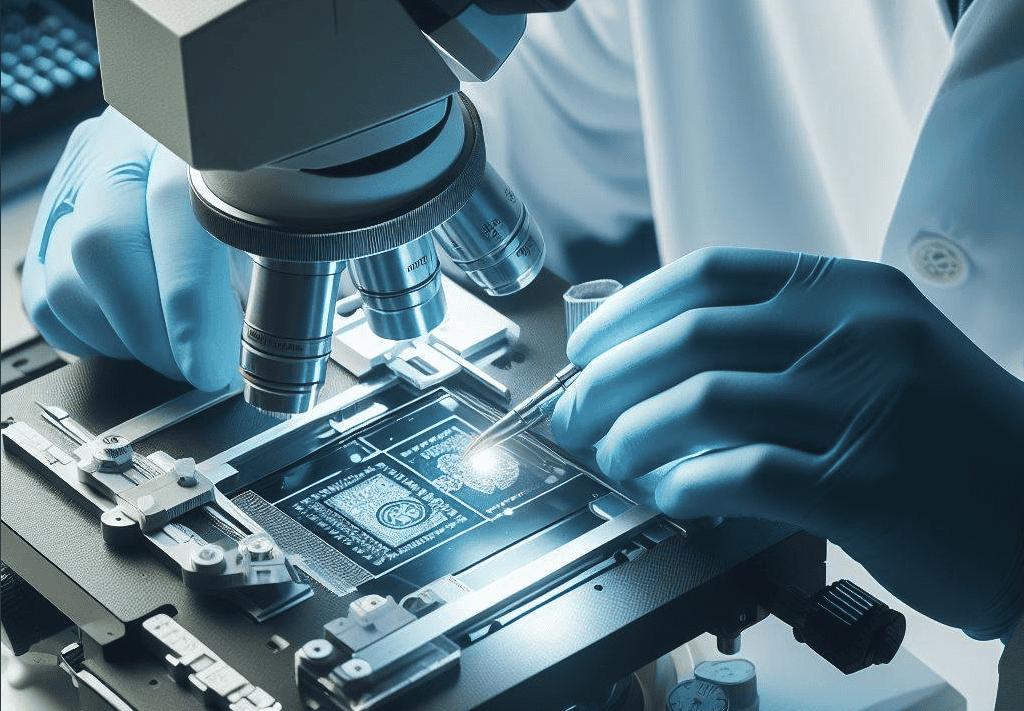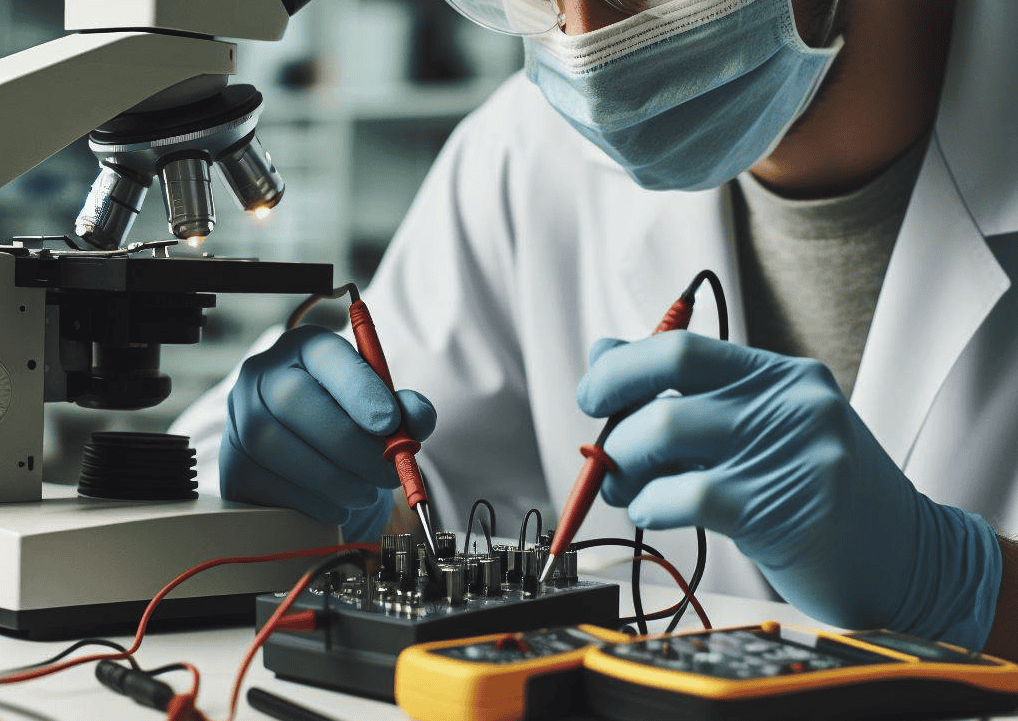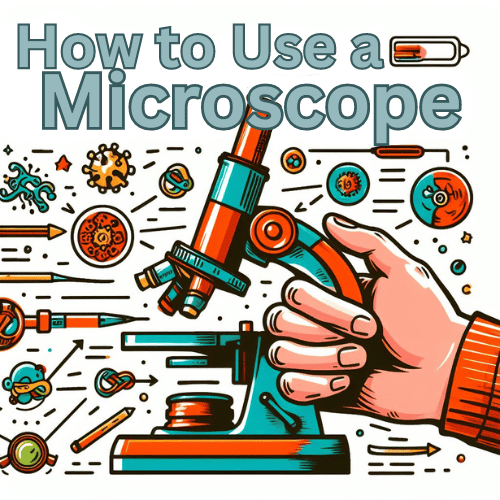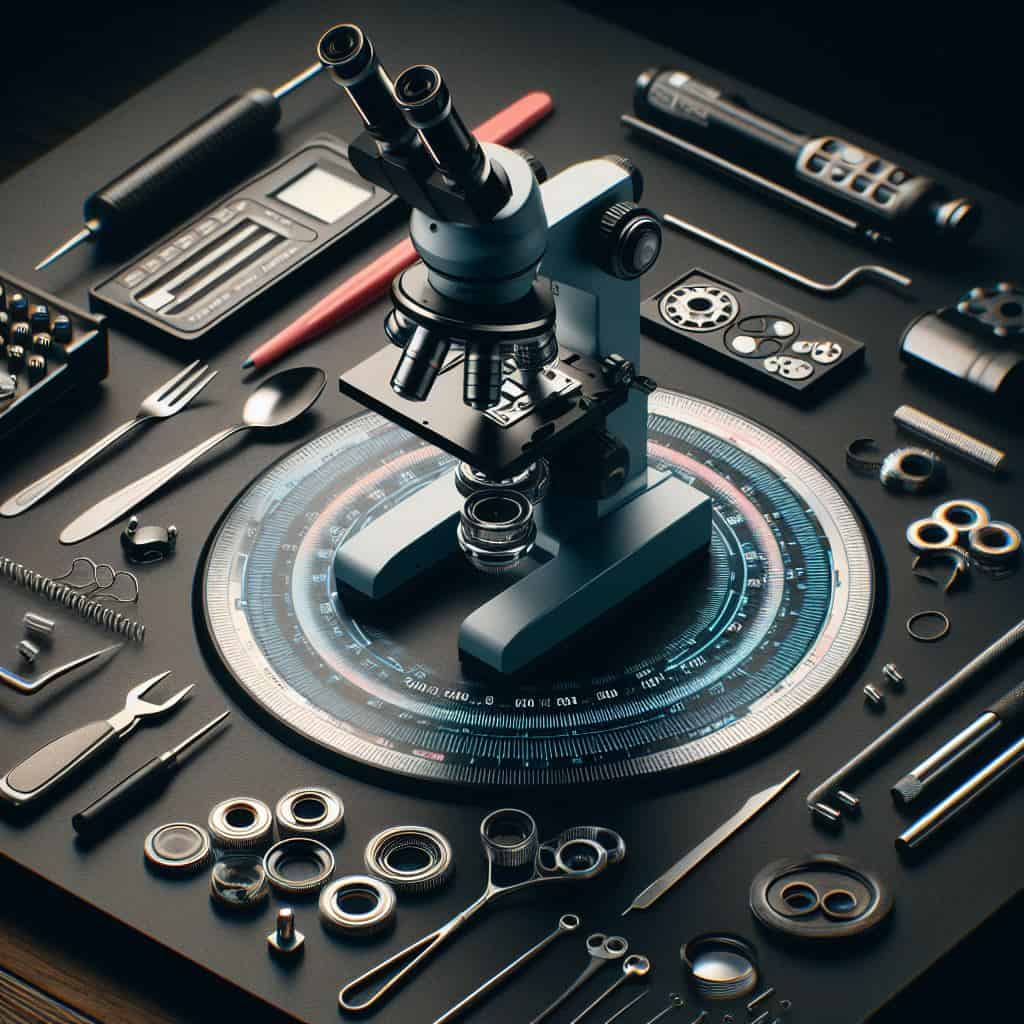Microscopes are invaluable tools in the scientific and medical fields, offering a closer look at the world beyond the naked eye. However, like any precision instrument, microscopes are prone to technical glitches that can hinder their performance.
In this blog post, we show you some tips and tricks for troubleshooting microscope problems and providing practical solutions to some common issues.
Understanding how to identify and address these issues is essential for lab techs, researchers, educators, and hobbyists alike, as it will enable them to obtain accurate and reliable results in their observations.
Understanding Your Microscope’s Components
Every microscope, whether used in a high-tech laboratory or a simple classroom setting, consists of several key components that help create clear and magnified images of microscopic entities.
Key parts like the lenses, eyepiece, objective lenses, stage, and the light source are fundamental in any microscope’s operation. However, these components can also be sources of common issues if not properly maintained or used correctly.
A thorough knowledge of the key components of a microscope is crucial for effective troubleshooting. By identifying and understanding each part, you can better diagnose and address common issues that may arise during use. Below, we detail the major components of a microscope and discuss the typical problems associated with each.

Major Microscope Components and Common Issues
| Component | Function | Common Problems | Preventative Tips |
|---|---|---|---|
| Lenses | Magnify the specimen; includes eyepiece and objective lenses. | Blurriness, scratches, or smudges. | Regularly clean with appropriate optical solutions; handle with care to avoid scratches. |
| Eyepiece | Where the viewer looks through to see the specimen. | Misalignment leading to unclear images. | Periodically check and adjust alignment; ensure proper installation. |
| Objective Lenses | Primary lenses that magnify the specimen; different lenses offer varying magnifications. | Dirt accumulation, misalignment, or damage. | Clean lenses routinely; rotate gently to prevent wear and tear. |
| Stage | Holds and positions the slide with the specimen. | Difficulty in movement, misalignment, or instability. | Ensure screws are tight and tracks are clear of debris. Lubricate moving parts if necessary. |
| Light Source | Illuminates the specimen for viewing. | Dim lighting, flickering, or complete failure. | Check and replace bulbs regularly; ensure proper electrical connections. |
Understanding these components not only helps in regular use but also troubleshooting. Issues with these parts can significantly impact the effectiveness of your microscope.
Regular maintenance, such as cleaning the lenses and adjusting the stage and eyepiece, can prevent many common problems and extend the lifespan of the device.
Through careful handling and periodic checks, you can ensure that your microscope continues to function optimally, providing clear and precise visualizations for all your observational needs.
Mechanical Issues in Microscopes
Mechanical issues in microscopes can significantly hinder their functionality. It’s crucial to understand these problems and know how to address them to maintain the instrument’s accuracy and extend its longevity.
Below, we delve into common mechanical troubles such as focusing difficulties, issues with stage adjustments, and complications arising from loose components, providing practical solutions for each.
Focusing Mechanisms
Proper focus is critical for achieving clear and precise images. Here are common problems with focusing mechanisms, along with solutions:
| Issue | Description | Suggested Solution |
|---|---|---|
| Stiff or Unresponsive Knobs | Difficulty in adjusting focus due to tightness. | Clean and lubricate the gearing mechanism; consider recalibration if persistently problematic. |
| Focus Drift | Inability to maintain focus, with constant drifting. | Check for loose components; realign or tighten as needed. |
Regular maintenance, such as cleaning and lubricating the focusing mechanism, can prevent these issues. In cases of severe misalignment, professional recalibration might be necessary.
Stage Adjustments
The stage must move smoothly for precise specimen positioning. Below are common stage-related problems and their fixes:
| Issue | Description | Suggested Solution |
|---|---|---|
| Jerky Movements | Stage does not move smoothly, affecting image stability. | Clean the stage tracks and check for mechanical obstructions. Realignment may be necessary for severe issues. |
| Stuck Stage | The stage does not move, preventing specimen positioning. | Lightly lubricate the mechanical tracks or rails after thorough cleaning to remove abrasive particles. |
Accurate stage movement is crucial for effective microscopy, making it essential to address these issues promptly.
Loose Knobs or Stuck Stages
Loose or immobile components can drastically affect the microscope’s usability. Here’s how to handle these issues:
Issue |
Description |
Suggested Solution |
|---|---|---|
| Loose Knobs | Control knobs that do not maintain settings. | Tighten the screws or replace worn-out components to ensure stability. |
| Immovable Stage | Stage remains fixed, unable to adjust position. | Clean and lubricate moving parts; replace damaged components if necessary. |
Tightening screws and cleaning components regularly can prevent these problems, ensuring smooth operation.
These troubleshooting steps for mechanical issues not only enhance the microscope’s functionality but also prolong its useful life.
Regular checks and maintenance, on top of gentle handling and proper storage, are recommended to avoid frequent issues and ensure reliable performance.

Advanced Troubleshooting Techniques
When common fixes aren’t enough to resolve issues with your microscope, advanced troubleshooting techniques may be required.
These methods address more complex issues such as optical element misalignment, software glitches in digital microscopes, and more intricate mechanical failures.
Below, we provide a detailed overview of these advanced techniques, helping you take your troubleshooting skills to the next level.
Dealing with Complex Issues
| Issue Type | Complex Problem | Advanced Troubleshooting Technique | When to Seek Professional Help |
|---|---|---|---|
| Optical Alignment | Misalignment of lenses affecting clarity. | Use alignment tools or software provided by the manufacturer to realign lenses. | If problems persist after attempted realignment. |
| Software Issues | Software malfunctions in digital microscopes. | Update software or reinstall to fix bugs. Use diagnostics tools if available. | If reinstallation or updates do not resolve issues. |
| Mechanical Failures | Gears or internal mechanisms malfunction. | Disassemble and inspect internal parts for wear or damage. Replace if necessary. | If disassembly is required and skills are not sufficient. |
DIY Fixes vs. Professional Help
It is important to decide when a problem can be handled through DIY efforts and when to call in a professional for more complex ones.
For example, software updates and simple realignments might be manageable at home, but complex electrical issues or internal component replacements often require expert attention to avoid further damage.
Here’s how to decide:
| Scenario | DIY Appropriate | Consider Professional Help |
|---|---|---|
| Minor software glitches | Yes, try updating or reinstalling software first. | If the problem persists or recurs, consult a technician. |
| Lens realignment | Attempt with proper tools if confident. | For high-precision instruments, professional recalibration might be safer. |
| Electrical issues | Basic checks like cable connections can be DIY. | For wiring or component replacements, seek professional services. |
By understanding the limits of DIY repairs and when to involve a professional, you can avoid causing further damage to your microscope and ensure that it operates effectively for longer periods.
Preventative Practices for Long-Term Microscope Care
Maintaining your microscope involves routine checks and incorporating good handling practices to prevent troubleshooting issues down the line.
This section provides essential tips to help you keep your microscope in optimal condition, ensuring it remains a reliable tool for your scientific studies, educational purposes, or personal interests.
Routine Maintenance Checks
Regular maintenance is key to extending the life of your microscope and minimizing the frequency of mechanical or optical issues.
Here are the primary maintenance actions you should regularly perform:
| Maintenance Activity | Description | Frequency |
|---|---|---|
| Lens Cleaning | Remove dust, oils, and other residues from lenses | Before and after each use |
| Calibration | Ensure alignment is precise for accurate results | Annually or as needed |
| Mechanical Inspection | Check and tighten loose components; lubricate moving parts | Every 6 months or after extended use |
Through these routine checks, minor issues can be identified and rectified before they turn into significant problems that require complex troubleshooting.
Handling and Storage Tips
Proper handling and storage are key to preventing damage and maintaining the microscope’s condition. Here are effective tips to ensure your microscope stays protected:
| Best Practice | Tips for Implementation |
|---|---|
| Careful Handling | Always carry the microscope with both hands and never rush its movement. |
| Proper Storage | Store the microscope in a dry, dust-free environment. Cover it when not in use to avoid dust accumulation. |
| Avoid Exposure to Extremes | Keep the microscope away from direct sunlight and extreme temperatures to prevent material degradation. |
Adhering to these practices not only keeps your microscope functioning smoothly but also prevents the types of issues that are often highlighted in troubleshooting guides.
Final Thoughts
Taking proactive measures to care for your microscope can significantly reduce the likelihood of encountering serious problems.
Implement the tips shared in this section to foster longevity and reliability in your microscopy work, ensuring that your instrument remains a valuable asset in your explorative and analytical endeavors.


